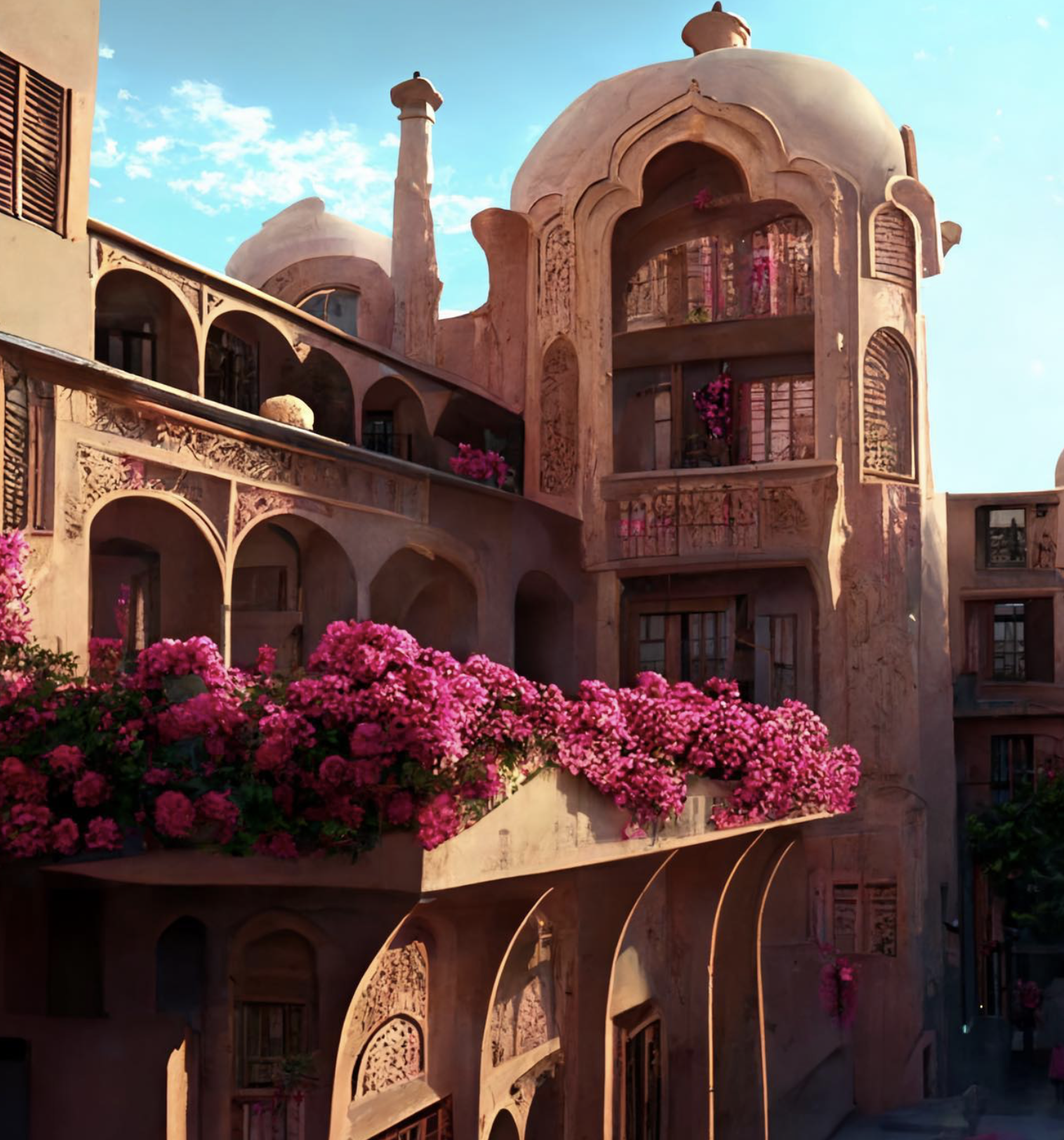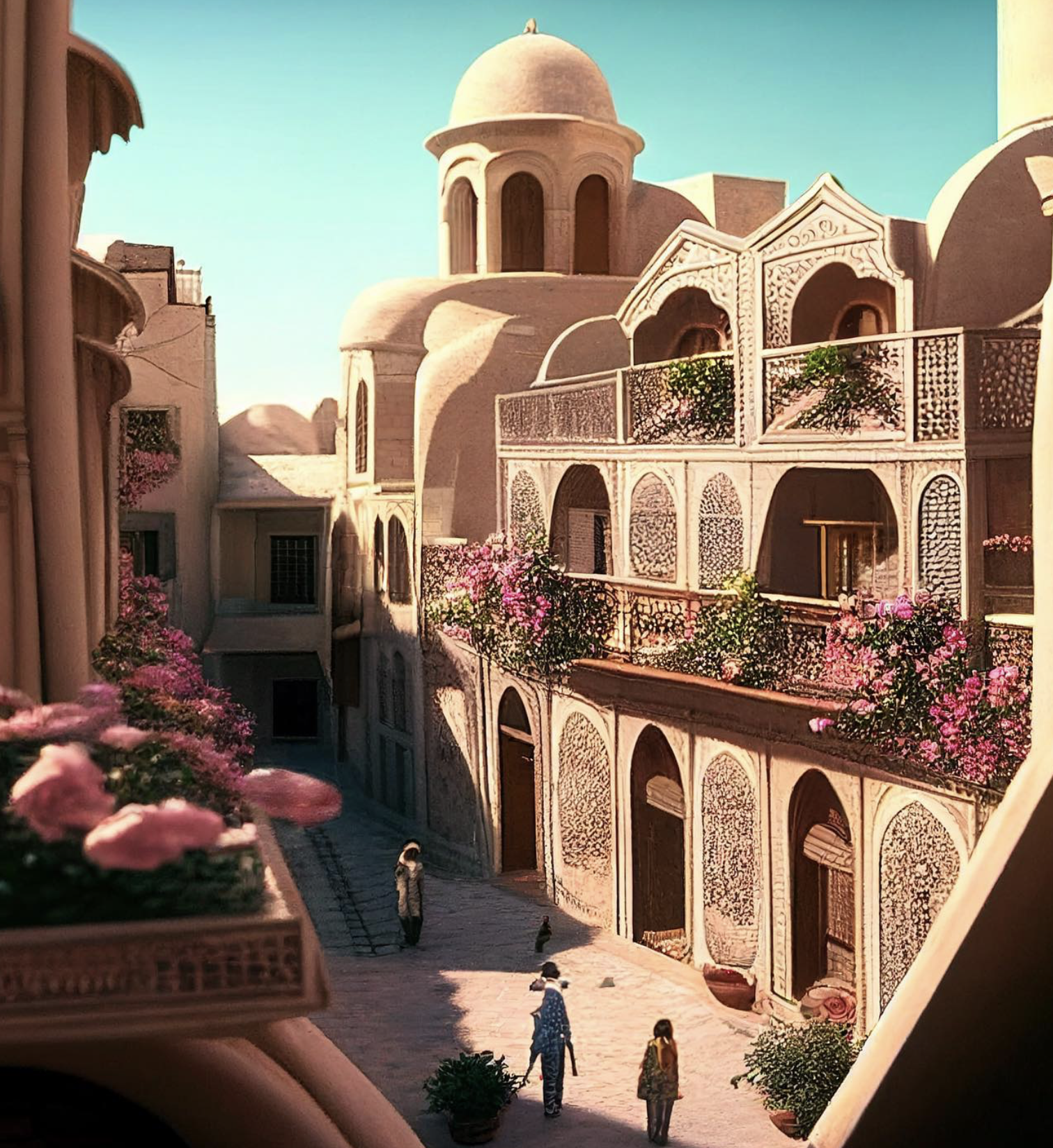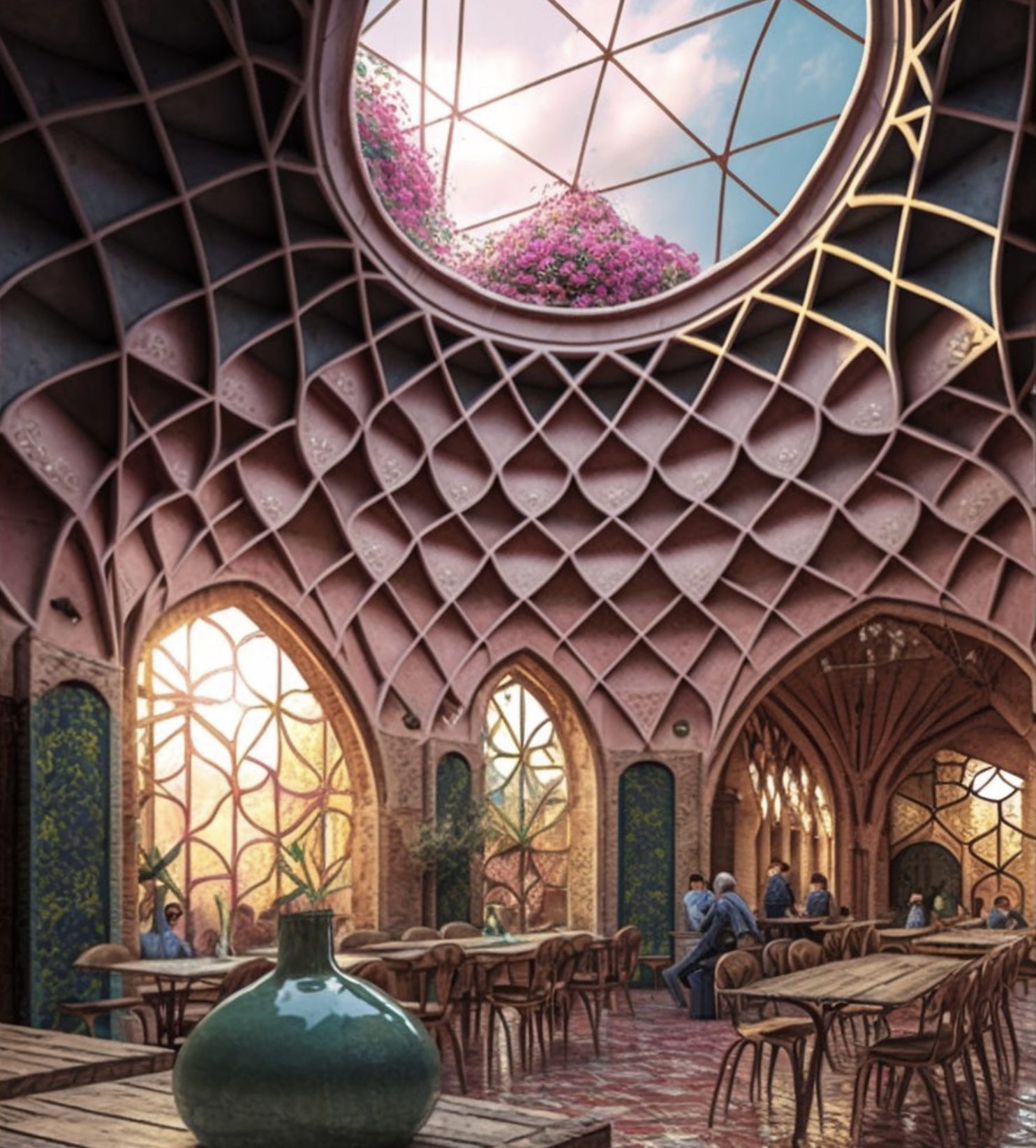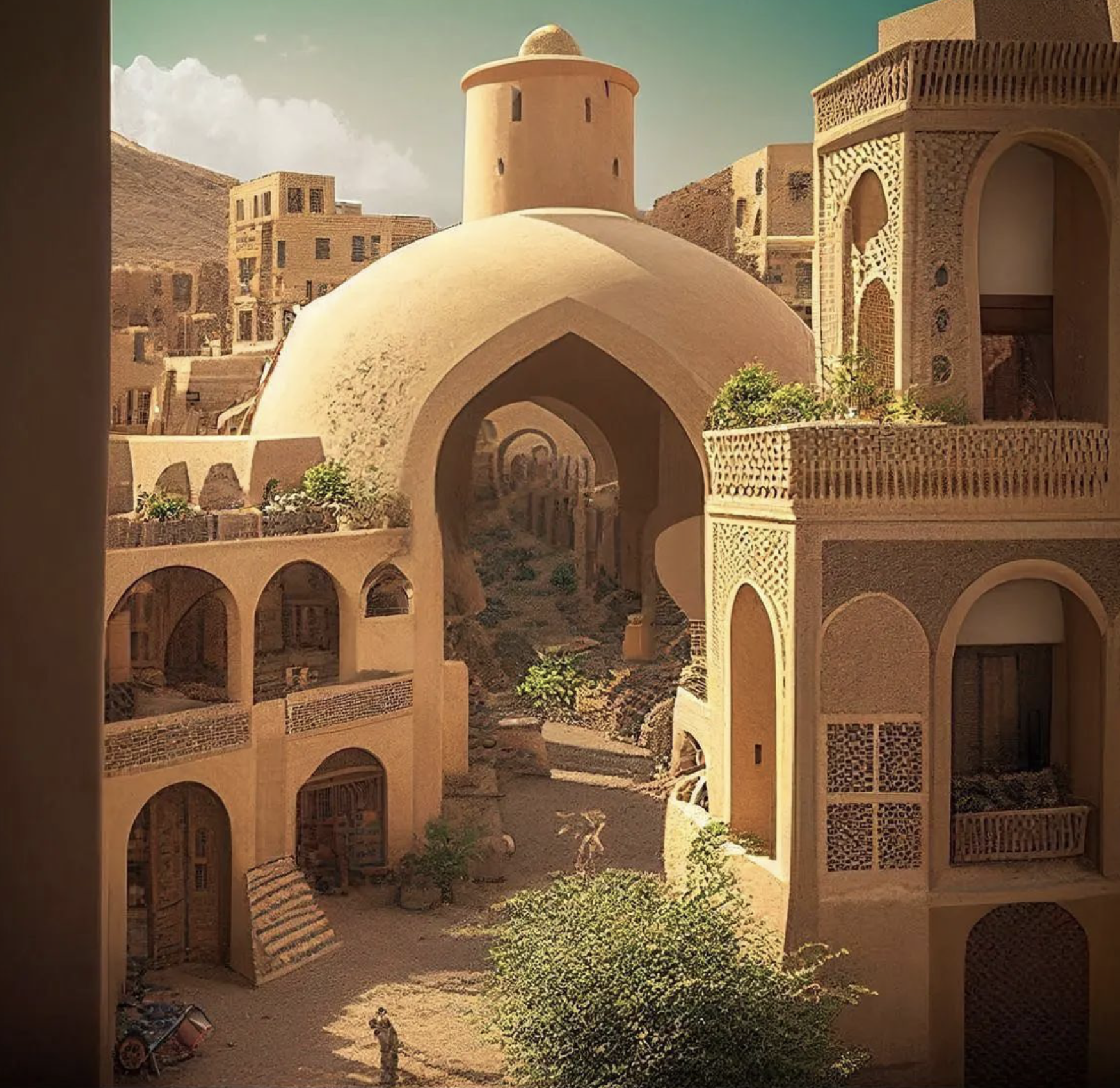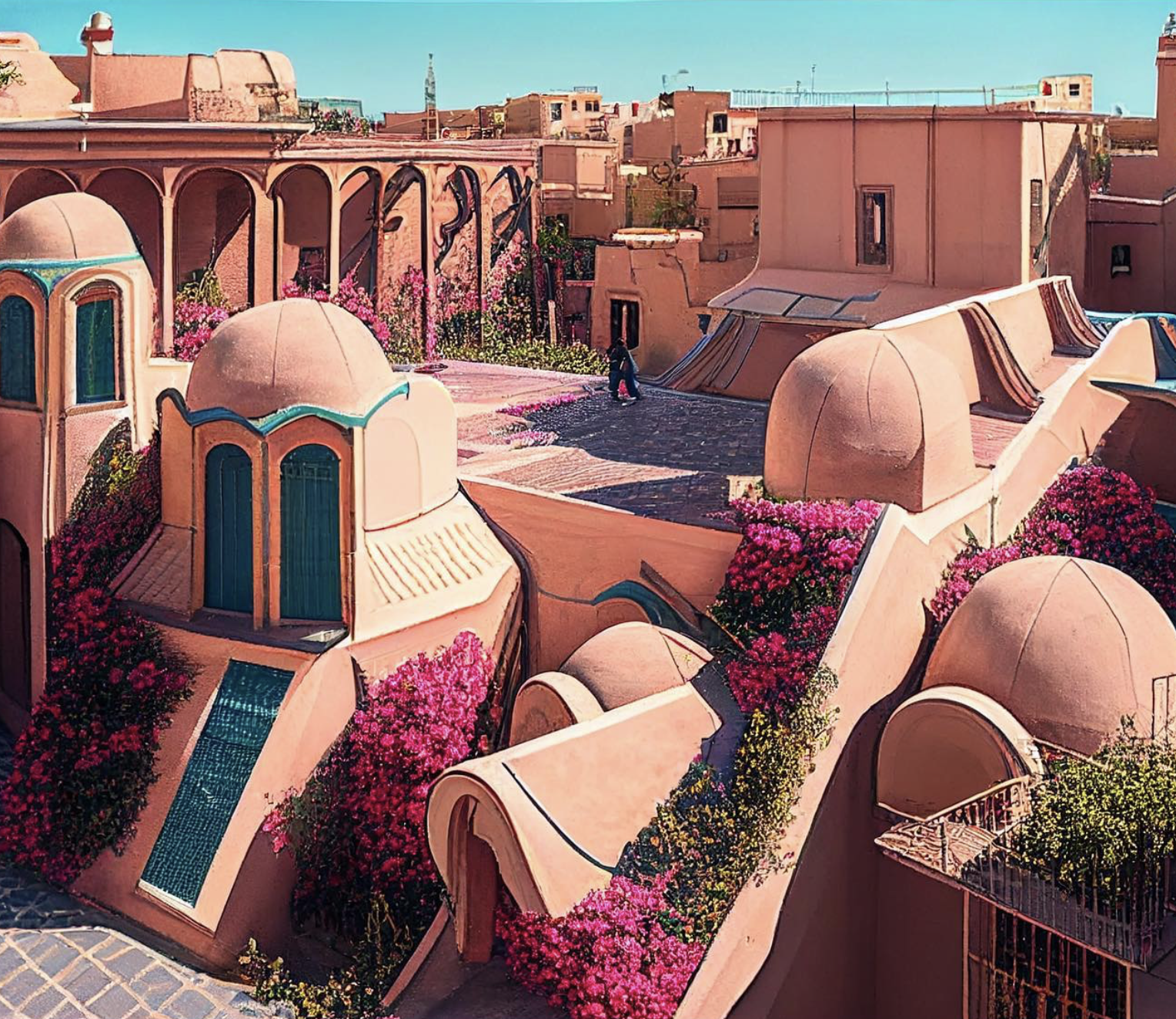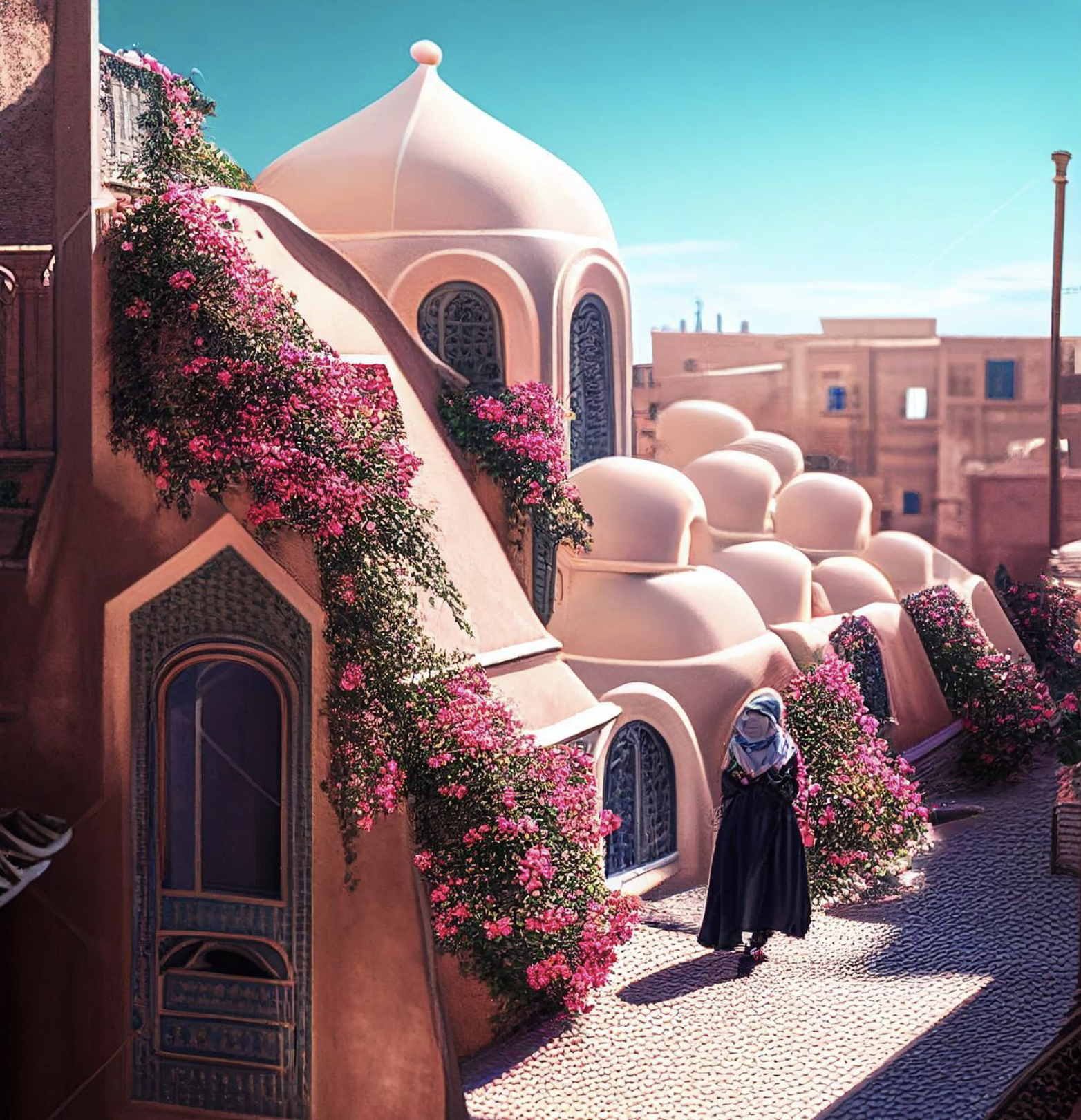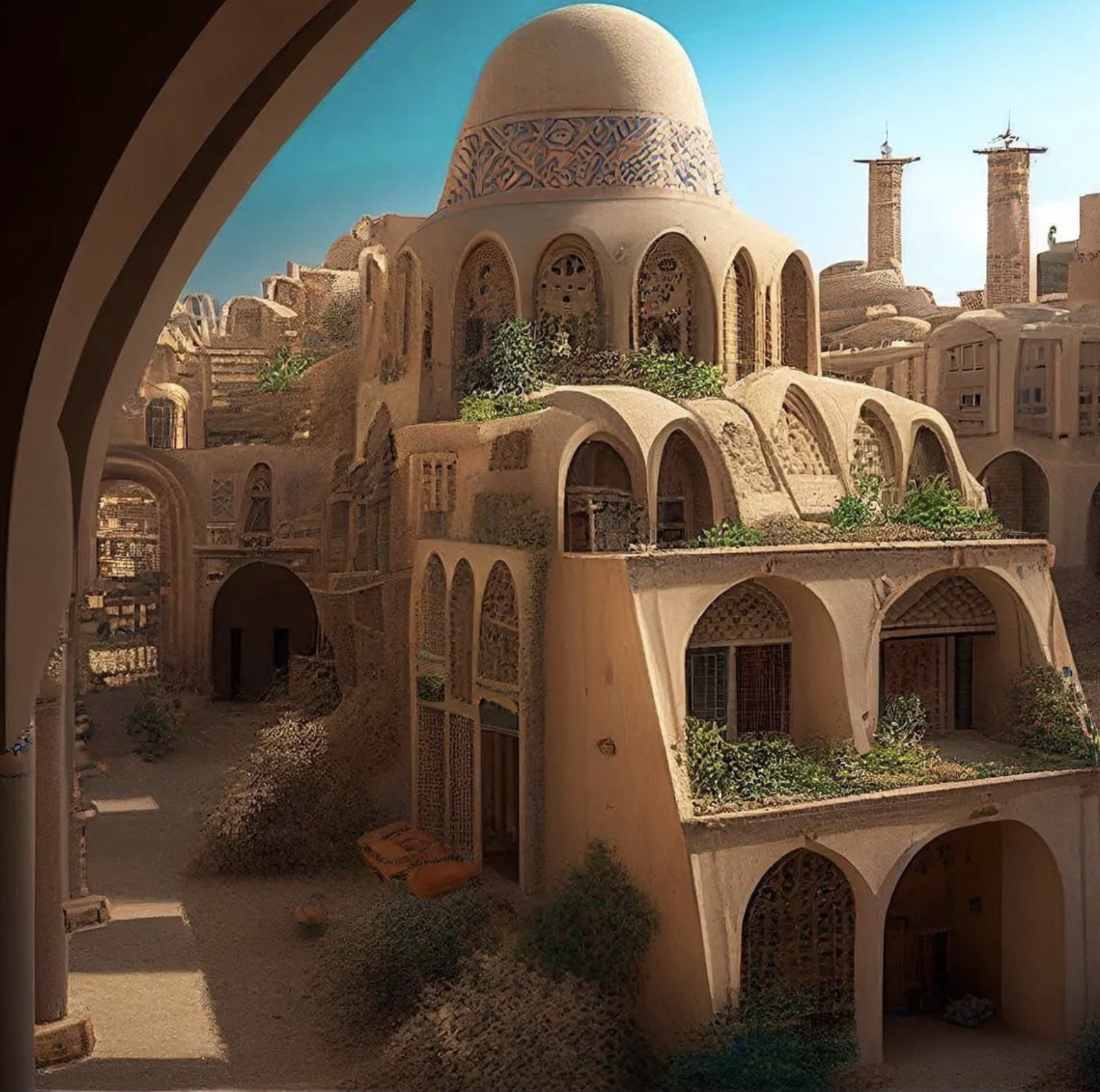The following is a post written by Parisa Bahrami, an architect based in Kashan. She has worked on numerous historic preservation and community development projects across Iran, drawing on anthropological methods. The piece was translated from Persian.
This post is part of the Persianate Futurism series, a collection of works which asks: What will the Persianate world look like 30 years in the future? It invites writers, artists, and readers to draw inspiration from the region’s unique collective past to imagine and construct novel future societies, economies, and cultures. See the full collection here.
The images were designed using AI by Kaveh Dadgar, an artist based in Iran.
***
Do you know what it feels like to walk on the desert sand with only your bare feet? To experience the cold or warmth on your toes? Have you ever felt you are touching history with every step?
I went to see the sunrise today in the desert outside Kashan. The coolness of the sand on my toes stirred my heart as I anticipated the rise of that strange point that had not yet shown itself in the bright half of the sky. Until suddenly, it rose and dazzled my eyes.
As I headed back home, I remembered that an oil extraction plant was supposed to be built near where I watched the sun rise. I’m glad it wasn’t built; otherwise I’d be writing about a toxic marsh instead of the calm desert sand.
After all these years, I still love living in Kashan, in a Qajar-era house whose soul goes back two centuries but which feels so familiar to me. When I was young, after 7 or 8 years of working and living in Kashan, I decided to buy a house for myself. I wanted to make it suitable for contemporary life; a house for an outlaw who spent her youth working in different parts of Iran and needed a home to relax in. Even today, in the year 1432 Hejri (2053 C.E.), the house is my greatest pride and joy.
In the seasons when I don’t travel, I teach at the art university in Kashan. Ours is one of the important centers for a kind of architecture that is today the most popular in Iran: adobe earthen architecture, exclusively using elements from the soil.
To be honest, it doesn’t feel so much like a university as it does a school of magic. You’ll have to come and see it sometime.
Here, students become sorcerers: when they graduate, they all have the ability to build a house and make art from what the Earth provides. They weave cloth from raw cotton and use dyes from plants they scavenge.
What we teach them here is nothing short of alchemy.
 Take a handful of dirt in your hand and imagine how it could become a home. A house made from the same thing as the mountains. Isn’t it magnificent?
Take a handful of dirt in your hand and imagine how it could become a home. A house made from the same thing as the mountains. Isn’t it magnificent?
The masters passed on the secret of this alchemy to the students. Today, we build our present from what came to us from the past, and with it we imagine our tomorrow.
We did not build here based on what we saw in the West or in the East. We preserved the traditions that came to our corner of the Silk Road. Here, we connect the East to the West, but we build ourselves and we build from our own dreams.
Since I was young, Kashan’s art university excelled in the field of handicrafts. It had skilled, knowledgeable, and pragmatic professors, each of whom worked and produced in addition to their academic work. They revived old methods of making pottery and ceramics and produced new kinds of products. These skills inspired many students to make Kashan their home.
It was in the 2030s that the revival and restoration of old houses began to flourish. Many artists, gallery owners, sculptors, painters, textile, carpet, and clothing designers came to Kashan and bought and renovated old homes.
Slowly different parts of the historical fabric came to life. Young people continued old businesses alongside the masters, and the gap between generations became less.
In my time, in collaboration with architects and research institutions, we held workshops in different cities of Iran and introduced young people to this intellectual model and sustainable architecture.
Little by little, we thought of starting an earthen architecture school. We wanted people to experience living in a mudbrick house for a longer period of time, to practice building with artistic masters, and during this time, to imagine better lives.
“Better” means learning to survive on limited resources and finding our roles in the path toward a sustainable life. It means practicing cooperation and coexistence, and getting to know different traditional methods of collaboration. It means paying attention to the benefit of the collective.
This experience was noticed by the university and they requested we convert our experimental mudbrick house into an official university structure so that more people could participate in these courses and experiences. The adobe architecture department started there.
We developed theoretical and practical learning, with both professors and artistic masters teaching theory of architecture, geometry, drawings, structures and installations, and topics such as sociology, political economy, anthropology, and cultural studies. The department built specialized laboratories for soil studies, which attracted researchers from across Iran and abroad.
These researchers came to appreciate how in Kashan, you can see the flow of its unique history. And I don’t just mean in theory. The flow of water that nourishes our houses comes from the springs of the surrounding mountains and is stored in its reservoirs.
Every week, the reservoirs are opened up and a share of water reaches the houses, filling our personal reservoirs to meet consumption needs for the week ahead. Planning for our daily use is second nature to us now.
The badgir wind towers from centuries ago were retrofitted with filters to provide clean, cool air and capture moisture in the air to provide water to homes. They cool our homes by channeling wind into them, and also funnel drinking water in. Climate change has dried up the land and eroded the soil, and we have found ways to cope with it.
The plains of Kashan are still white. Kashan’s cloth weaving continues since the time of the Silk Road, producing a continuity of stunning velvet, lace, and silk, but replacing the raw material with mostly recycled fabrics imported from abroad.
My house, like the city of Kashan, is a beautiful paradise of reinvention. Come visit sometime.


